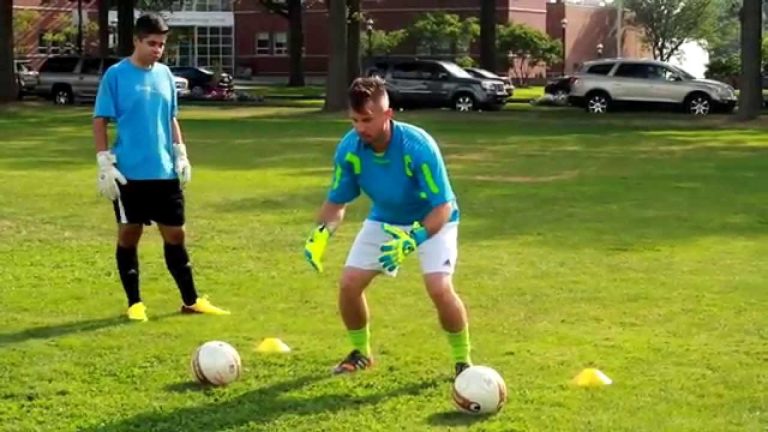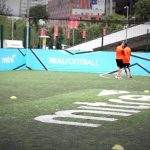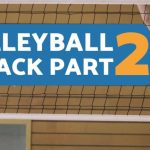Are you a goalkeeper looking to improve your performance between the posts? Look no further than footwork drills. Often overlooked, footwork is a crucial aspect of goalkeeping that can make all the difference in saving those crucial shots. In this article, we will explore some of the best footwork drills specifically designed for goalkeepers, guaranteed to enhance your agility, quickness, and overall goalkeeping prowess. So lace up your boots and get ready to take your skills to the next level with these effective and engaging drills.
What is the importance of footwork for goalkeepers?
Goalkeepers, often hailed as the last line of defense, possess a crucial skill set that extends beyond their hand-eye coordination. Footwork, the art of swift and agile movement, plays a pivotal role in their ability to collect the ball effectively. The importance of footwork cannot be overstated, as it enables goalies to position themselves accurately, react swiftly to shots, and maintain balance during high-pressure situations. Without a doubt, footwork is an indispensable attribute that every goalkeeper must possess.
When it comes to goalkeeping, speed is of the essence. A goalkeeper’s footwork directly impacts their reaction time and ability to cover ground rapidly. By mastering the art of footwork, goalies can quickly reposition themselves to anticipate shots and make saves with precision. Whether it’s a diving save or a quick step to the side, footwork empowers goalkeepers to be in the right place at the right time, increasing their chances of success in crucial moments.
Furthermore, footwork allows goalkeepers to collect the ball with their whole body behind it, ensuring a secure save. By utilizing swift footwork, goalies can move swiftly towards the ball, effectively closing the distance between themselves and the incoming shot. This allows them to position their body in a way that maximizes their chances of making a successful save, reducing the likelihood of rebounds or goals. In essence, footwork serves as the foundation for a goalkeeper’s ability to make confident and reliable saves.
In conclusion, footwork is an indispensable skill for goalkeepers. It enables them to swiftly position themselves, react promptly, and collect the ball securely. By honing their footwork, goalies improve their overall performance, becoming a formidable force between the posts. So, the next time you witness a goalkeeper making a stunning save, remember that their footwork played a vital role in that moment of brilliance.
What is the level of skill goalkeepers have with their feet?
Goalkeepers have evolved to such an extent that their footwork rivals that of outfield players. A prime example is Ederson Moraes from Manchester City, whose exceptional skills allow him to effortlessly deliver precise passes up to 60 meters, accurately finding the head of Erling Haaland or seamlessly setting up Jack Grealish with pinpoint accuracy.
What is the recommended method for training a goalkeeper?
The key to effective goalkeeper training lies in a strategic blend of short-distance acceleration-based speed training and short-distance lateral change of direction exercises. By focusing on explosive bursts of speed over a short distance, goalkeepers can enhance their agility and reaction time, essential skills for making quick saves and intercepting shots. Additionally, incorporating elements of longer distance sprints into the training regime ensures that goalkeepers develop the endurance required to maintain peak performance throughout a match.
When it comes to goalkeeper training, the emphasis should be on honing short-distance acceleration-based speed and agility. By incorporating drills that involve quick bursts of speed over a 5-meter distance, goalkeepers can improve their ability to cover the goal quickly and react swiftly to shots. Additionally, training should include exercises that focus on lateral change of direction, as this skill is crucial for making dynamic saves and positioning oneself effectively to block shots from different angles.
While short-distance acceleration and change of direction are vital for goalkeeper training, it is equally important to integrate longer distance sprints into the regimen. These sprints, covering distances greater than 10 meters, help goalkeepers build the necessary endurance to sustain their performance throughout a match. By including both short and long-distance sprint exercises, goalkeepers can improve their overall speed, agility, and stamina, ensuring they are well-prepared for any situation that may arise on the field.
Goalkeeper Footwork 101: Master the Moves that Win Games
Mastering the art of goalkeeper footwork is crucial for achieving victory on the field. With swift and precise moves, goalkeepers can anticipate shots and make game-changing saves. By honing their footwork skills, goalkeepers can effortlessly position themselves to block shots from any angle. Whether it’s a quick shuffle to cover the near post or a nimble sidestep to close the angle, every step counts in the pursuit of victory. With relentless practice and dedication, goalkeepers can develop the agility and speed necessary to outmaneuver their opponents and secure the win. So lace up those boots, put in the hard work, and become the goalkeeper that dominates the game with unparalleled footwork skills.
Unlock Your Goalkeeping Potential: Footwork Drills for Success
Unlock Your Goalkeeping Potential: Footwork Drills for Success
Ready to take your goalkeeping skills to the next level? Look no further than these footwork drills designed to unlock your full potential between the posts. Mastering footwork is crucial for any goalkeeper, as it not only enhances agility and reaction time but also improves overall positioning and shot-stopping ability. In this comprehensive training program, you will learn a variety of footwork drills that will challenge and push you to become the best goalkeeper you can be. From ladder drills to cone exercises, these drills will improve your foot speed, quickness, and coordination, giving you the edge you need to succeed on the field.
Get ready to showcase your skills and dominate the opposition with these footwork drills for success. As a goalkeeper, your footwork is the foundation of your game, and by sharpening this essential skill, you can elevate your performance to new heights. These drills have been carefully curated to target different aspects of footwork, ensuring a well-rounded training experience. Whether it’s lateral movements, shuffling, or explosive jumps, each drill will help you develop the agility and precision necessary to make those game-changing saves. So, lace up your boots, grab your gloves, and get ready to unleash your full potential as a goalkeeper.
Stay One Step Ahead: Essential Footwork Techniques for Goalkeepers
Stay One Step Ahead: Essential Footwork Techniques for Goalkeepers
As a goalkeeper, having excellent footwork is crucial to your success on the field. Quick and efficient footwork allows you to react swiftly to shots and make vital saves. One important technique is the shuffle step, where you move laterally in small, quick steps to quickly adjust your position. This technique enables you to cover more ground and stay one step ahead of opposing players. By practicing the shuffle step regularly, you can enhance your agility and ensure you are always ready to make a game-changing save.
Another essential footwork technique for goalkeepers is the drop step. This technique is used when you need to change direction rapidly to reach a ball that is far from your current position. By crossing one leg over the other and pushing off with the outside foot, you can generate the necessary speed and power to make a diving save or intercept a pass. The drop step is a fundamental skill that every goalkeeper should master to effectively protect their goal and maintain control of the game.
Lastly, the recovery step is a technique that helps goalkeepers quickly regain their balance and reposition themselves after making a save. After diving or lunging to make a save, it is crucial to recover swiftly to be ready for any follow-up shots or rebounds. The recovery step involves pushing off the ground with your hands and quickly bringing your legs back under your body. By mastering this technique, you can minimize the time spent on the ground and maximize your ability to defend the goal effectively.
In conclusion, mastering essential footwork techniques is a must for goalkeepers who want to stay one step ahead of their opponents. The shuffle step enhances your agility and allows you to cover more ground, while the drop step helps you change direction quickly to reach the ball. Lastly, the recovery step ensures you can swiftly regain your balance after making a save. By honing these techniques through regular practice, you can elevate your footwork skills and become an even more formidable presence in the goal.
Incorporating effective footwork drills into goalkeeper training sessions is essential for enhancing agility, speed, and overall performance on the field. By consistently practicing these drills, goalkeepers can improve their ability to react quickly to shots, make precise saves, and maintain optimal positioning. From ladder drills to cone exercises, these footwork drills provide a solid foundation for goalkeepers to excel in their role and contribute to their team’s success. So, whether you are a professional goalkeeper or a passionate amateur, dedicating time to these drills will undoubtedly elevate your game and help you become a formidable force between the posts.



